- Clone
- 536 (See other available formats)
- Regulatory Status
- RUO
- Other Names
- Vγ3 T-cell receptor, T cell receptor gamma 3, TCR Vγ5 (Tonegawa nomenclature), TRGV5, GV1S1
- Isotype
- Syrian Hamster IgG
- Ave. Rating
- Submit a Review
- Product Citations
- publications
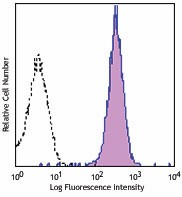
-

Mouse dendritic epidermal cell line 7-17 were stained with anti-mouse TCR Vγ3 (clone 536) APC (filled histogram) or hamster IgG APC isotype control (open histogram).
| Cat # | Size | Price | Quantity Check Availability | Save | ||
|---|---|---|---|---|---|---|
| 137505 | 25 µg | 149 CHF | ||||
| 137506 | 100 µg | 338 CHF | ||||
Vγ3+ T cells are the predominant γδ TCR-bearing cells in early fetal thymus. The majority of CD3+ cells in 14-day fetal thymus express Vγ3. Vγ3 is also expressed on Thy-1+ dendritic epidermal cells (Thy-1+ DECs). Cells that express Vγ3 are not significantly detectable in adult lymphoid organs. It has been reported that Lck and Fyn, two Src family kinases, are required for the development of Vγ3+ T cells.
Clone 536 reacts with the Vγ3 segment as designated by the Garman nomenclature system. Mouse TCR Vγ3 is also known as TCR Vγ5 under the Heilig & Tonegawa nomenclature system.
Several TCR γ and δ chain nomenclature systems exist. In order to consolidate the various nomenclature systems, we have created charts for corresponding names across some of the most popular naming methods. Click here to see charts.
Product Details
- Verified Reactivity
- Mouse
- Antibody Type
- Monoclonal
- Host Species
- Syrian Hamster
- Immunogen
- AKR mouse dendritic epidermal cell clone 7-17
- Formulation
- Phosphate-buffered solution, pH 7.2, containing 0.09% sodium azide.
- Preparation
- The antibody was purified by affinity chromatography and conjugated with APC under optimal conditions.
- Concentration
- 0.2 mg/ml
- Storage & Handling
- The antibody solution should be stored undiluted between 2°C and 8°C, and protected from prolonged exposure to light. Do not freeze.
- Application
-
FC - Quality tested
- Recommended Usage
-
Each lot of this antibody is quality control tested by immunofluorescent staining with flow cytometric analysis. For flow cytometric staining, the suggested use of this reagent is ≤0.5 µg per million cells in 100 µl volume. It is recommended that the reagent be titrated for optimal performance for each application.
- Excitation Laser
-
Red Laser (633 nm)
- Application Notes
-
Additional reported (for relevant formats) application include: immunoprecipitation1 and immunofluorescence2.
This product may be used for research purposes only. It is not licensed for resale and may only be used by the buyer. This product may not be used and is not licensed for clinical assays, where the results of such assays are provided as a diagnostic service. If a diagnostic or therapeutic use is anticipated, then a license must be requested from the University of California. This availability of such diagnostic and therapeutic use license(s) cannot be guaranteed from the University of California. -
Application References
(PubMed link indicates BioLegend citation) - Product Citations
-
- RRID
-
AB_10898113 (BioLegend Cat. No. 137505)
AB_10895900 (BioLegend Cat. No. 137506)
Antigen Details
- Structure
- A member of Ig superfamily, heterodimerized with δ TCR chain and associated with CD3 complex.
- Distribution
-
Dendritic epidermal T cells (DECs) and fetal murine thymocytes.
- Function
- Antigen recognition
- Ligand/Receptor
- Antigens
- Cell Type
- T cells, Thymocytes
- Biology Area
- Adaptive Immunity, Immunology
- Molecular Family
- TCRs
- Antigen References
-
1. Allison JP, et al. 1991. Annu. Rev. Immunol. 9:679.
2. O’Brien RL, et al. 2000. J. Immunol. 165:6472.
3. Kelly KA, et al. 1993. Int Immunol. 5:331.
4. Moore TA, et al. 1996. J. Immunol. 157:2366.
5. Payer E, et al. 1991. J. Immunol. 146:2536.
6. Van Oers NSC, et al. 1996. Immunity 5:429. - Gene ID
- 110067 View all products for this Gene ID
- UniProt
- View information about TCR Vgamma3 on UniProt.org
Related Pages & Pathways
Pages
Related FAQs
Other Formats
View All TCR Vγ3 Reagents Request Custom Conjugation| Description | Clone | Applications |
|---|---|---|
| PE anti-mouse TCR Vγ3 | 536 | FC |
| APC anti-mouse TCR Vγ3 | 536 | FC |
| TotalSeq™-A0210 anti-mouse TCR Vγ3 | 536 | PG |
| TotalSeq™-C0210 anti-mouse TCR Vγ3 | 536 | PG |
Customers Also Purchased
Compare Data Across All Formats
This data display is provided for general comparisons between formats.
Your actual data may vary due to variations in samples, target cells, instruments and their settings, staining conditions, and other factors.
If you need assistance with selecting the best format contact our expert technical support team.
-
PE anti-mouse TCR Vγ3
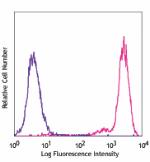
Mouse dendritic epidermal cell line 7-17 stained with 536 PE -
APC anti-mouse TCR Vγ3
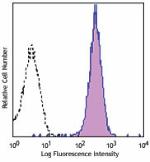
Mouse dendritic epidermal cell line 7-17 were stained with a... -
TotalSeq™-A0210 anti-mouse TCR Vγ3
-
TotalSeq™-C0210 anti-mouse TCR Vγ3
 Login / Register
Login / Register 









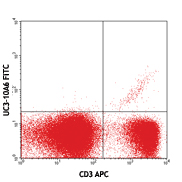
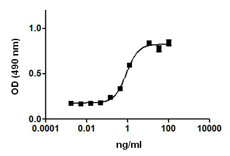
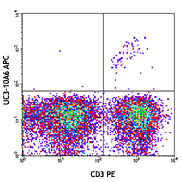
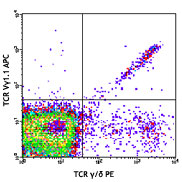



Follow Us